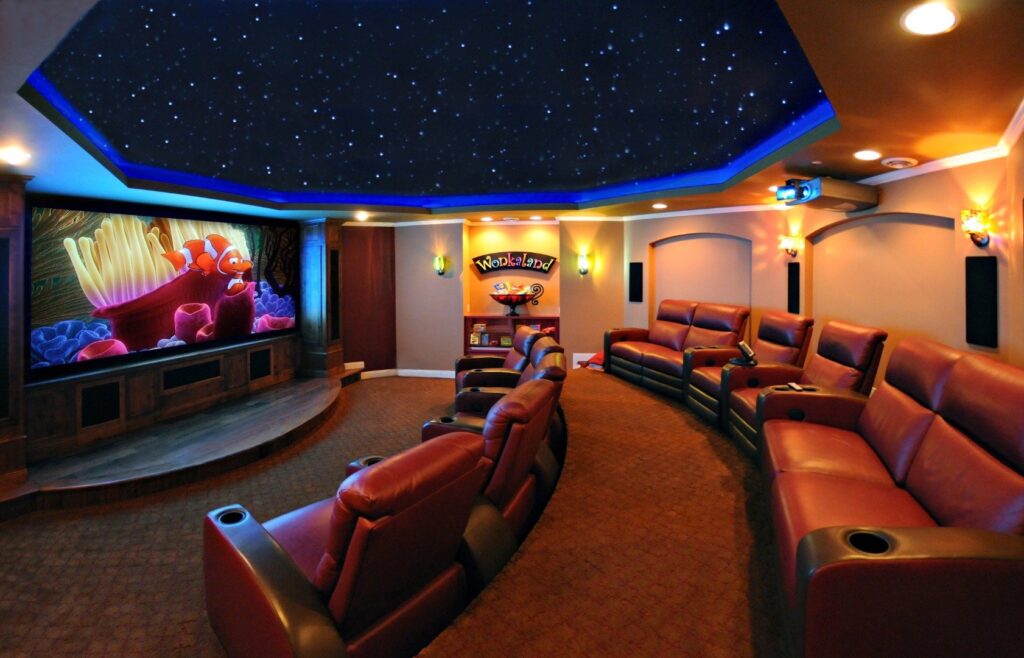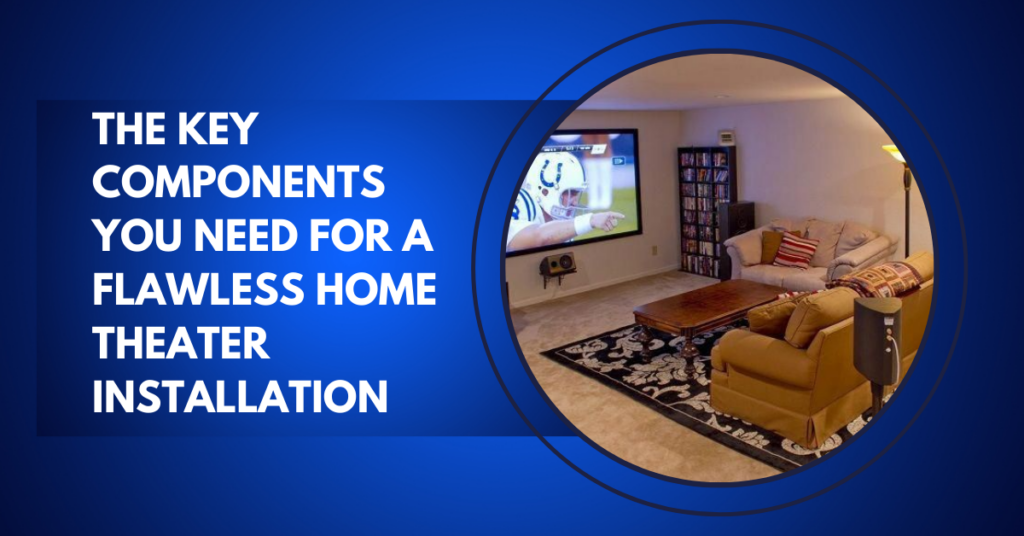Installing a home theater system can turn your living room into a cinema, providing you with an immersive viewing experience that rivals commercial theaters. But to achieve the best experience, you need the right components. Whether you’re upgrading an existing setup or building a new one from scratch, understanding the essential components is crucial for a flawless home theater.
In this guide, we’ll walk you through the key components you need, explain their role, and offer tips on how to choose the best ones for your home theater installation.
Note – If you’re looking for expert Home Theater Installation in UAE, look no further than Grandkolours. With their professional team and top-notch services, they ensure that your home theater system is installed with precision and care. Transform your entertainment space today and experience the ultimate in sound and picture quality. Reach out to Grandkolours for a consultation and get started on creating your perfect home theater setup!
1. The Display: Choosing the Right TV or Projector
Why the Display Matters
Your home theater experience revolves around the display. Whether you choose a flat-screen TV or a projector, this is the central piece of equipment. The quality of the picture is essential for an immersive experience, so it’s important to select the right display for your room and preferences.

home theater installation in uae
TV or Projector: Which Should You Choose?
- TVs are generally better for smaller rooms or if you’re looking for simplicity. Modern 4K Ultra HD TVs offer stunning picture quality with vibrant colors and sharp details.
- Projectors are perfect for larger spaces or if you want a true “cinema-like” experience. A projector can create a much larger screen size, but you’ll need a dark room and a projector screen for the best image quality.
When deciding between a TV or projector, consider factors like room size, lighting, and your budget. For a bright room with plenty of natural light, a TV might be the better option. For a dedicated theater room, a projector could offer the size and experience you’re looking for.
2. Sound System: Bringing Movies to Life with Surround Sound
The Importance of Audio in Home Theater
While a great display gives you the picture, the sound is just as important for a complete home theater experience. Poor audio quality can ruin even the best visuals, so investing in a high-quality sound system is essential.
Types of Sound Systems
There are a few different options to consider when it comes to audio:
- Stereo Speakers (2.0 or 2.1 system): This is the most basic setup, with two speakers or two speakers plus a subwoofer for added bass. This can work well for small spaces or casual viewing.
- 5.1 Surround Sound: This is the standard for most home theaters. It includes five speakers (front, rear, and center) plus a subwoofer for deep bass. This setup creates a surround sound effect that places you in the middle of the action.
- 7.1 Surround Sound: If you want to take things up a notch, a 7.1 system adds two additional speakers for an even richer, more immersive sound experience. This setup works well in larger rooms.
When selecting a sound system, make sure the speakers are compatible with your room size and the type of content you’re watching. The right system will provide clear dialogue, powerful sound effects, and deep bass that pulls you into the movie.
3. AV Receiver: The Heart of Your Home Theater System
What Does an AV Receiver Do?
The AV receiver is the central hub of your home theater system. It connects all your devices (TV, speakers, DVD player, gaming console, etc.) and ensures that the audio and video signals are properly routed. It also manages power and sound distribution.
4. Speaker Placement: Maximizing Sound Quality
Proper Speaker Positioning
Even the best speakers won’t sound their best if they’re not placed properly. Proper speaker placement is key to creating a surround sound experience that immerses you in the action.
Here are a few tips for optimal speaker placement:
- Front Speakers (Left, Right, and Center): These should be placed at ear level, with the center speaker directly below or above the screen. The left and right speakers should be placed slightly to the left and right of the screen, angled towards the seating area.
- Surround Speakers: These should be placed to the left and right of the seating area, ideally slightly behind you, to create the surround sound effect. Aim to keep them at ear level or slightly above.
5. Cables and Wiring: Keep It Neat and Tidy
The Role of Cables in Your Home Theater Setup
The quality of the cables used in your home theater system plays an important role in maintaining high-quality audio and video signals. Cheap or poor-quality cables can result in signal loss or poor performance.
Tips for Choosing and Organizing Cables
- HDMI Cables: Use high-quality HDMI cables to connect your display, AV receiver, and other devices. Look for cables that support 4K, HDR, and Dolby Atmos for the best performance.
- Speaker Wire: For wired speakers, make sure you use speaker wire with sufficient gauge (thickness). The lower the gauge number, the thicker the wire, which can provide better sound quality, especially for long distances.
6. Lighting: Creating the Right Atmosphere
Why Lighting is Important
Lighting plays a big role in your home theater setup. The right lighting can enhance the atmosphere and make your viewing experience more enjoyable. Too much light can wash out the screen, while too little can strain your eyes during long movie marathons.
Types of Lighting for Home Theaters
- Ambient Lighting: Soft, dim lighting around the room helps reduce eye strain without affecting the picture quality. LED strip lights or wall sconces work well for ambient lighting.
- Accent Lighting: Accent lights around the screen or speakers can highlight certain features and create a more dramatic atmosphere.
- Task Lighting: Consider adding task lighting near the seating area for convenience, such as dimmable lamps or floor lights for easy navigation during breaks.
Make sure the lighting can be dimmed easily. Many home theater systems use smart lighting that can be controlled via an app or remote, allowing you to adjust the ambiance to your liking.
7. Final Touches: Seating and Decor
Comfortable Seating
Comfortable seating is a must for a home theater. Choose chairs or sofas that offer good support and enough space to stretch out. For the best viewing experience, consider reclining chairs with adjustable footrests, or even home theater seating designed for maximum comfort.
Home Theater Decor
The decor can help set the mood. Consider dark curtains, wall art related to movies, or movie-themed posters to enhance the cinematic atmosphere. Avoid too much light-colored furniture, as it can reflect light and distract from the experience.
Conclusion: Building Your Perfect Home Theater System
Creating a flawless home theater is all about combining the right components and ensuring they work together seamlessly. From the display and sound system to the AV receiver and speaker placement, every element plays an important role in delivering an exceptional viewing experience.
For more insightful articles related to this topic, feel free to visit theguestblogs.com






